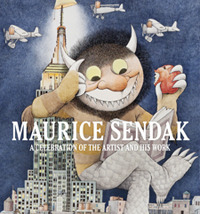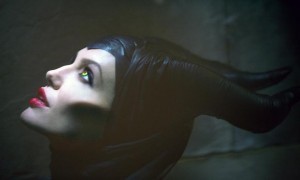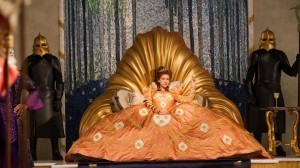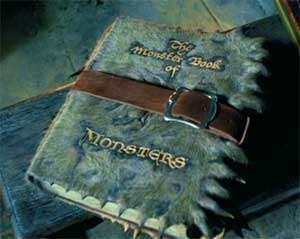Maria Tatar's Blog, page 18
April 3, 2013
Justin Schiller’s Collection of Sendak’s Art
Beginning June 10, on what would have been Sendak’s 85th birthday, that collection will go on display at the Society of Illustrators in New York. The exhibit, containing more than 200 previously unpublished studies, sketches, and ephemera, will run through August 17. Every piece is from Schiller’s collection.
http://www.publishersweekly.com/pw/by...
March 30, 2013
More on Hollywood and Fairy Tales
Why can’t Hollywood get it right when it comes to fairy tales? Films that allude to fairy tales or have fairy-tale subtexts are often more powerful than straight adaptations from source material. Guillermo del Toro’s Pan’s Labyrinth is one example, but there are many others ranging from Pil Sung-Yim’s Hansel and Gretel to Christoph Hochhaeusler’s Milchwald. Take a look at Jack Zipes’s Enchanted Screen for hundreds of great examples of fairy-tale films.
Sometimes it’s easier to do the lazy thing and just adapt from public domain material. As Charlie Jane Anders writes:
Fairytales don’t have a lesson at the end, unlike fables — but here’s a lesson anyway: Hansel and Gretel were a public-domain piece of intellectual property, with name recognition and a connection to the hot fairy-tale brand. They were, in other words, already fattened up. Also, these two versions of Hansel represent two obvious ways of tackling the material in a way that appeals to a PG-13 audience: campy send-up, or slack-jawed action.
And here’s Ethan Gilsdorf on Hollywood’s fairy-tale obsession:
After nearly a century of fairy-tale films targeted in large part at kids — starting with Walt Disney’s 1937Snow White and the Seven Dwarfs — there’s another, edgier treatment on the rise. Last year, moviegoers saw two versions of the Grimm Brothers’ Snow White story in Mirror Mirror with Julia Roberts and Snow White and the Huntsman with Kristen Stewart. Next year, Angelina Jolie will star as Sleeping Beauty’s nemesis in Malificent, and Disney is looking to release a live-action version of Cinderella directed by Kenneth Branagh. We’ve recently seen movies like Hansel & Gretel: Witch Hunters and Jack the Giant Slayer in theaters and Grimm and Once Upon a Time on TV. The list goes on and on. What accounts for this boom in adult-sized fairy tales?
Part of the answer is that the stories and themes of the Grimms and Hans Christian Andersen never really left cineplexes — they’ve just been in better disguises. Working Girl, Pretty Woman, and Maid in Manhattanall borrowed heavily from the rags-to-riches Cinderella story. Snow White, so concerned with beauty and aging and jealousy, can be seen in countless mother/daughter rivalry plots. “We use bits and pieces of fairy tales all the time to fashion new stories, but often in ways so subtle that they escape our attention,” says Maria Tatar, chairwoman of the Program in Folklore & Mythology at Harvard University. Even Quentin Tarantino’s bloody Django Unchained, Tatar points out, draws from the Sleeping Beauty tale.
More at:
http://www.bostonglobe.com/magazine/2013…
March 8, 2013
Sleeping Beauties vs. Gonzo Girls
When Stieg Larsson’s girl with the dragon tattoo, Lisbeth Salander, encounters a man who regards her as “legal” prey, we quickly realize exactly what sets this skinny hacker apart from heroines of the past. Salander invites Advokat Bjurman into the bedroom, leading him to the bed, “not the other way around.” Her next move is to fire seventy-five thousand volts from a Taser into his armpit and push him down with “all her strength.” In a stark reversal of the nineteenth-century playwright Victorien Sardou’s famous formula for successful theatrics—“Torture the woman!”—Salander ties up Bjurman and tattoos a series of vivid epithets onto his torso. A sadistic sexual predator is transformed in an instant into her victim.
We’ve come a long way from what Simone de Beauvoir once found in Anglo-European entertainments: “In song and story the young man is seen departing adventurously in search of a woman; he slays the dragons and giants; she is locked in a tower, a palace, a garden, a cave, she is chained to a rock, a captive, sound asleep: she waits.” Have we kissed Sleeping Beauty goodbye at last, as feminists advised us to do not so long ago? Her younger and more energetic rival in today’s cultural productions has been working hard to depose her, but archetypes die hard and can find their way back to us in unexpected ways.
Read more: http://www.newyorker.com/online/blogs/books/2013/03/sleeping-beauty-lady-gaga-hunger-games-heroines.html#ixzz2MydRxnPs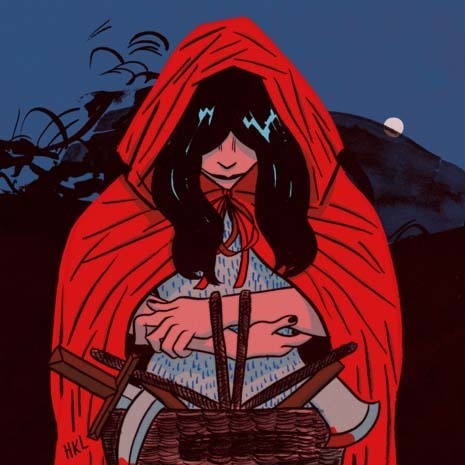
March 2, 2013
Great Places to Read
http://www.buzzfeed.com/awesomer/the-bes…
And of the 30 sites, my favorite is still the Beinecke Library, which holds J.M. Barrie’s papers, and where I spent 6 glorious weeks, while working on Annotated Peter Pan.
March 1, 2013
Snow White as Bullfighter
 blancanieves-teaseriframe>
blancanieves-teaseriframe>
Once upon a time there was a little girl who had never known her mother. She learned the art of her father, a famous bullfighter, but was hated by her evil stepmother. One day she ran away with a troupe of dwarves, and became a legend. Set in southern Spain in 1920s, BLANCANIEVES is a tribute to silent films.
Great or Grim?
February 26, 2013
Books with Magical Properties
We all know about that terrible Monster Book of Monsters in Harry Potter, but how many other literary books have magical properties? Walter Benjamin tells us about one of those magical books in a short story by Hans Christian Andersen:
“In one of Andersen’s tales, there is a picture-book that cost ‘half a kingdom.’ In it everything was alive. ‘The birds sang, and people cam out of the book and spoke.’ But when the princess turned the page, “they leaped back in again so that there should be no disorder.’ Pretty and unfocused, like so much that Andersen wrote, this little invention misses the point by a hair’s breadth. Things do not come out to meet the picturing child from the pages of the book; instead, in looking, the child enters into them as a cloud that becomes suffused with the riotous colors of the world of pictures.”
There is also Lucy’s book in the Chronicles of Narnia–that intoxicating story in the Magician’s Book that she forgets as soon as she turns the pages–and she can’t go back! Any others?
February 23, 2013
February 16, 2013
“I’m not Hans Christian Andersen” (“Or am I?”)
Dwight Garner reviews Maurice Sendak’s My Brother’s Book, and quotes the author on his misanthropic tendencies:
Maurice Sendak (1928-2012) cultivated an image as a curmudgeon. “I’m not Hans Christian Andersen,” he told Bill Moyers. “No one’s going to make a statue in the park with a lot of scrambling kids climbing up me. I won’t have it.”
http://www.nytimes.com/2013/02/15/books/…
Sendak actually had more in common with Andersen than he knew. When a sculptor proposed to create a statue of the author, surrounded by children to whom he would be reading, Andersen protested:
I pointed out that I could not bear anyone behind me, nor had I children on my back, on my lap, or between my legs when I read; that my fairy tales were as much for older people as for children. The naïve was only a part of my fairy tales; humor was the real salt in them.
Sendak had more in common with Andersen than he realized. And the character of Jack in the new book must be modeled on Kay in Andersen’s Snow Queen:
Jack is catapulted “to continents of ice.” He is “a snow image stuck fast in water like stone./His poor nose froze.”
Poor Andersen: children today are now on his back, on his lap, and between his legs when they visit statues of him in Copenhagen and in New York City’s Central Park.
February 14, 2013
Memes and Genes
http://news.nationalgeographic.com/ne...
Above a link to a fascinating new article about resistance to changing features of a story at a local level. Improvisation is not necessarily all it’s cracked up to be, and I’m reminded of the cultural conservatism of folklore. The upside to its conservatism is the preservation of tales from times past.
In a new study, evolutionary psychologist Quentin Atkinson is using the popular tale of the kind and unkind girls to study how human culture differs within and between groups, and how easily the story moved from one group to another.
Atkinson, of the University of Auckland in New Zealand, and his co-authors employed tools normally used to study genetic variation within a species, such as people, to look at variations in this folktale throughout Europe.
The researchers found that there were significant differences in the folktale between ethnolinguistic groups—or groups bound together by language and ethnicity. From this, the scientists concluded that it’s much harder for cultural information to move between groups than it is for genes.
Maria Tatar's Blog
- Maria Tatar's profile
- 316 followers


